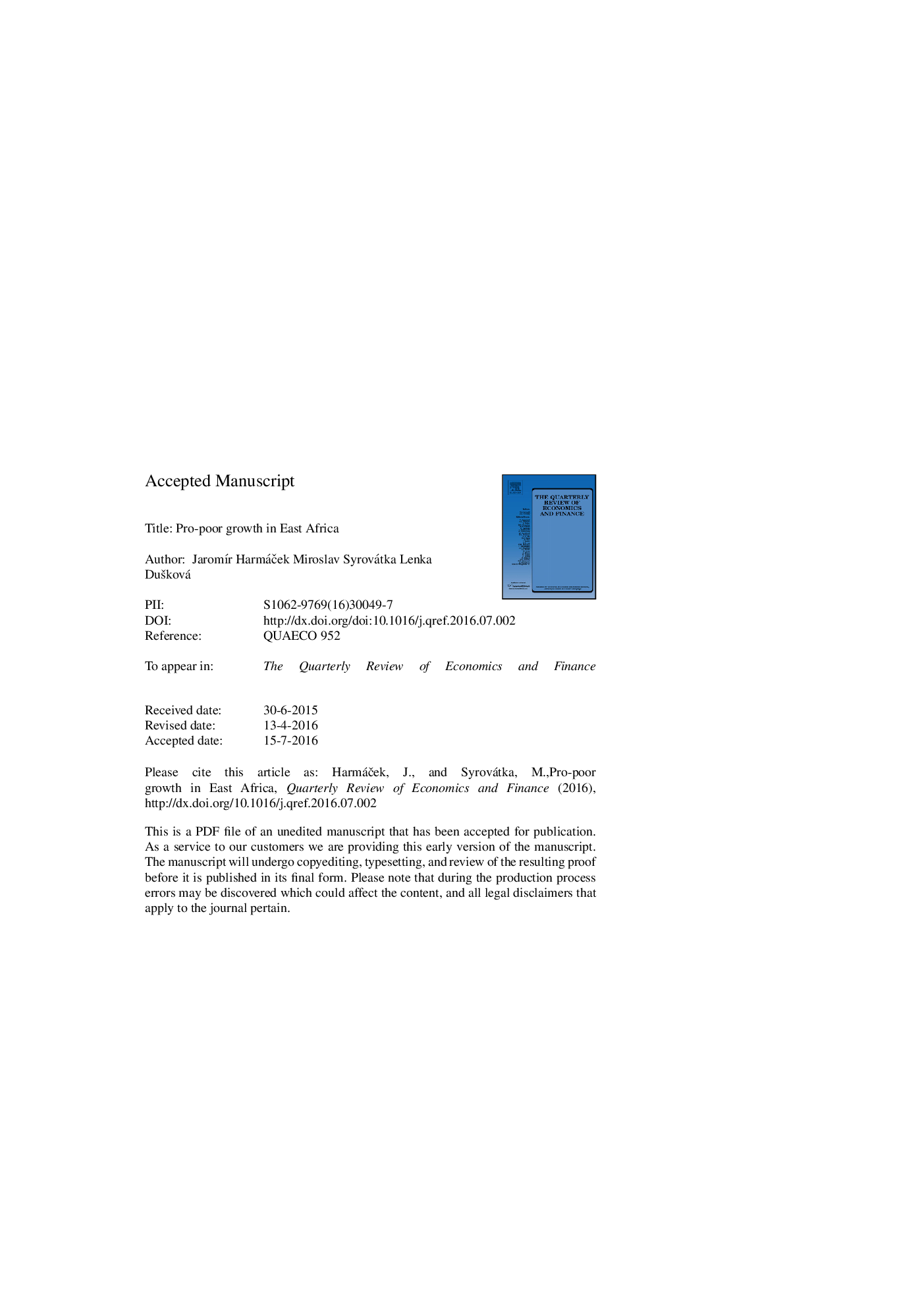| Article ID | Journal | Published Year | Pages | File Type |
|---|---|---|---|---|
| 5103631 | The Quarterly Review of Economics and Finance | 2017 | 27 Pages |
Abstract
In the paper we discuss the concept of pro-poor growth and apply it to the East African countries. We examine the interlinkages between three development concepts-poverty, inequality, and growth. We use four operationalizations of the pro-poor growth concept: pro-poor growth index (Kakwani & Pernia, 2000), poverty equivalent growth rate (Kakwani & Son, 2008), poverty growth curve (Son, 2004), and rate of pro-poor growth (Ravallion & Chen, 2003). Applying these methods to the latest available data (from the World Bank's PovcalNet), we calculate and compare the degree of pro-poor growth in five East African countries (Burundi, Kenya, Rwanda, Tanzania and Uganda). According to our results, for most of the cases (time periods by countries) the growth was not pro-poor in the relative sense, yet still poverty reducing. While the poor benefited from growth more than the non-poor only in Rwanda, the greatest poverty reduction was achieved in Tanzania.
Related Topics
Social Sciences and Humanities
Economics, Econometrics and Finance
Economics and Econometrics
Authors
JaromÃr HarmáÄek, Miroslav Syrovátka, Lenka DuÅ¡ková,
